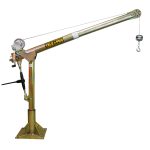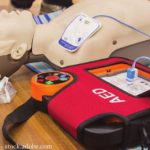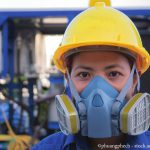Archive for January 2020
OZ Lifting Introduces New Tele-Pro Davit Crane
OZ Lifting Products LLC plans to debut at Water Environment Federation’s (WEF) Residuals and Biosolids Conference and Exhibition, which takes place March 31 to April 3 at the Minneapolis Convention Center, Minn. The expo spans the middle two days of the event on April 1-2. The Winona, Minnesota-based manufacturer plans to show its new Tele-Pro…
Read MoreBe Informed: Myths and Misconceptions in CPR
By Joan Mantini, Chief Editor “Sudden cardiac arrest occurs when ventricular fibrillation takes place or when the heart stops beating altogether. Without immediate medical attention, the victim collapses, loses consciousness, becomes unresponsive and dies. Sudden cardiac death appears among the multiple causes of death on 13.5% of death certificates (366 807 of 2 712 630), which suggests that…
Read MoreMHS Launches New Large Parcel Singulator
MHS announced a new singulation solution for high-throughput parcel operations. The new Activated Roller Belt (ARB) Large Parcel Singulator is designed to keep automated sortation systems running smoothly, transforming a bulk flow of packages into a single-file stream, critical for high-throughput operations. The ARB Singulator uses a series of roller belts that operate at progressively…
Read MoreSampling Pump Innovations Make Compliance Sampling Easier
By Debbie Dietrich, Contributor In this new decade, health and safety professionals will continue to see advances in monitoring technologies, including connected worker devices, wearables and miniature sensors. Together, these just might revolutionize chemical exposure evaluation. Amidst these innovations lies the heart of air sampling for OSHA compliance: the personal sampling pump drawing air through…
Read MoreVoluntary Use of Respirators: Making Sense of OSHA Regulations
By Travis Rhoden, Contributor It is not uncommon for employees to approach their supervisor or safety manager and ask about wearing a respirator, just because they will “feel more comfortable” doing the work. It is also not uncommon for the supervisor or safety manager to be unclear on whether to allow this type of voluntary use…
Read MoreHear This: Noise Conservation in the Workplace
By Barbara Nessinger, Editor-in-Chief Some 22 million workers are exposed to potentially damaging noise at work each year, according to OSHA’s most recent estimates. In fact, in 2018, U.S. businesses paid more than $1.5 million in penalties for not protecting workers from noise, with an additional $242 million in workers’ compensation paid out for hearing…
Read MoreImprove Performance: Digitally Transform Your Management System
By Sean Baldry, CRSP, Contributor In a 2000 survey, the American Industrial Hygiene Association (AIHA) reported that its members were spending almost 50% of their time on activities other than industrial hygiene.1 In the two decades since, that trend doesn’t appear to have slowed. Companies appear to be shifting, more and more, toward a generalist…
Read MoreIndustrial Dust Toxicity and Explosivity Hazards Control
By Zachary Hachmeister, Contributor Dust in industrial settings can present a variety of hazards, but the two that are most prevalent relate to the toxicity and explosive characteristics of the material. Both hazards are addressed in different fashions; however, there is some correlation between the two. For toxicity purposes, government agencies, such as the American…
Read MoreEmpowering Safety & Productivity Performance with Big Data
Lohrasp Seify, M.Sc., MCSE, Contributor Understanding how to transform data into quality insights and drive results is quickly becoming an expectation of professionals across every type of industry. According to a 2019 Deloitte survey[1], 70% of business executives working at companies with a large workforce (500+ employees) expect data analysis to become even more important…
Read MoreHow to Manage an Effective Hearing Conservation Program
Noisy work environments can cause hearing loss in workers assigned to those areas. Equipment that generates unwanted sound, or noise at or above 85 decibels, A-weighted (dBA), is normally the cause. Understanding the amount of noise in the workplace is the first step in managing an occupational hearing conservation program. It is in the best…
Read More








